9877c PAIR OF EBONIZED AND GILT BRASS MOUNTED NEOCLASSICAL SIDE OR DINING CHAIRS Possibly Russian. Circa 1900. Measurements: Height: 35 1/2″ (90 cm) Width: 17 3/4″ (45 cm) Depth: 20 1/2″ (52cm)
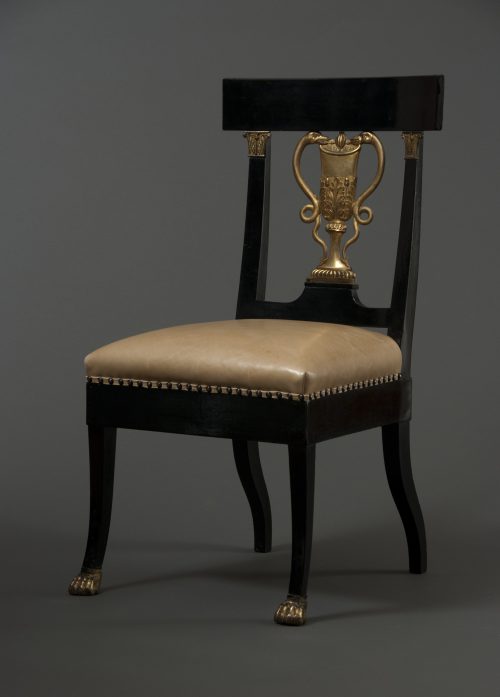
Research
Of ebonised wood and gilt brass. Each with curved rectangular top rail, the central gilt brass splat in the form of a vase decorated with acorns and oak leaves and flanked by serpents. The posts headed by capitals with conforming decoration, each raised on four square legs, the rear pair of unusual shaped form, the front pair terminating in gilt brass paw feet. Old repairs and reinforcements and old refreshments to ebonizing.
Provenance:
Christie’s Amsterdam, March 11, 1998
Important New York Private Collection
The golden age of Russian furniture-making occurred in the late 18th century and the first quarter of the 19th. The finest examples of the Russian Empire style were produced in this period, in which “smooth polished surface of a precious variety of wood would be set off by mounts of gilded wood and bronze borrowing motifs from ancient art.”1
The present chairs are similar in form to a set originally supplied to the Tauride Palace in St. Petersburg, dating from the 1st quarter of the 19th century (figure 1). Both models share similar shaped gilt central splats; those on the Tauride chairs feature dolphins attending a reed filled vase, while the splats on the present chairs are cast with a vase decorated with Jupiter’s acorns, surmounted by Ceres’ sacred poppy guarded by serpents whose bodies also comprise the vase handles. The oak tree was sacred to Jupiter, the chief deity in ancient Roman religion, and it was believed that he first taught mankind to subsist on acorns. In Roman mythology Ceres was an agricultural deity, and she partook of the narcotic poppy flower so that she might sleep and forget her grief after her daughter, Proserpina, was abducted by Pluto. It is interesting to note that the gilt-brass capital of the stiles is also cast with the sacred poppy, an unusually emphatic reference to the symbolism of the classical world.
Further classical references are the klismos form of the chairs, the gilt-brass zoomorphic feet of the two front legs, and the gilt-brass Corinthian capitals which surmount the uprights.
These chairs were part of a set made in the early 19th century and were created to extend the set in circa 1900.
Footnotes:
1. J.Schultze ed St Petersburg um 1800, Recklinghausen, 1990, p427 no 387.
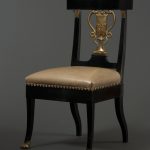
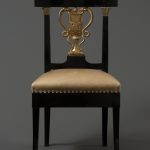
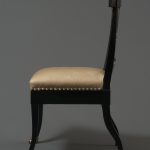
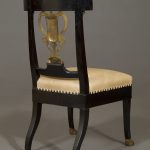

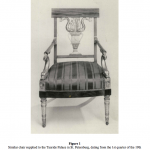
Comments are closed.